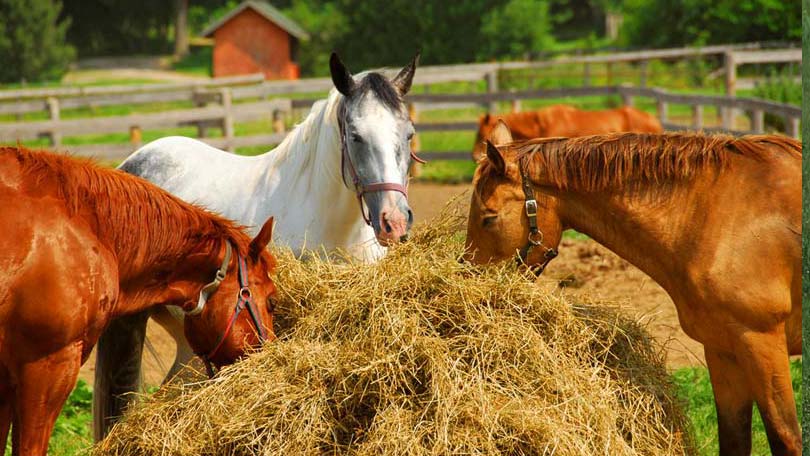
The American Quarter Horse is the most popular equine breed in America, today. Over 3.2 million Quarter Horses are registered worldwide. Originally bred for speed, the Quarter Horse finds itself at home in a variety of disciplines: showing, racing, rodeos, working ranch horses, and working western events. The Quarter Horse also capably handles dressage, jumping, and driving.
The history of the Quarter Horse stems from the Godolphin Arabian (Arabian horses are the foundation of many of the breeds known in the world today). The grandson of this horse, a Thoroughbred named Janus, was imported into colonial Virginia in 1756, and was crossed with the Chickasaw horses, which were developed by Native Americans, crossing Spanish, Barb, and Arabian bloodstock. This cross proved to be very successful, resulting in the “Quarter Mile Horses,” an animal that could travel over a quarter mile distance faster than any other in the world.
The body structure of the Quarter Horse is small and sturdy, making it handy enough to perform real work, and quick enough to race. Wide set shoulders and low hocks make this breed especially capable of quick turnarounds, sliding stops, and extreme athleticism. These characteristics make the Quarter Horse desirable for cutting cattle, barrel racing, jumping, and virtually any other job that requires quick maneuvering. This ability to perform working western operations came through yet another cross into the breed of “Quarter Mile Horses.” During Westward Expansion, settlers bred the Mustang in with the breed, creating a horse with ultimate “cow sense.”
This became an unmistakable trait of the Quarter Horse, proving themselves indispensable on large cattle operations in the Midwest, even after the automobile was invented. After a long week of hard work, most cattlemen brought their “Quarter Mile Horses” together on weekends, to race. Thoroughbred blood was once again infused into the mix, along with Arabian, Morgan and Standardbred. These breeds added refinement, quickness, agility, and hardiness to the “Quarter Mile Horse,” until it became the breed we know today.
The American Quarter Horses Association (AQHA) was founded in 1940 in attempts by cattlemen to preserve the integrity of their ranch horses. Many of the early foundation sires that were recorded were Thoroughbreds, and the book remains open to Quarter Horse/Thoroughbred crosses, as well as Thoroughbreds themselves. These animals must meet conformational and performance criteria, and are known as Appendix Quarter Horses until such time as they receive a permanent registration number.
Quarter Horses make great family pets as well as great show horses. They are generally quiet animals, who are good natured and willing. The show type quarter horse is usually distinguishable in two categories, those that will excel in halter and those that are more of the working type. This type is also known as the stock type, and is much more muscular, stocky, compact, and yet agile. These types of Quarter Horses are very athletic, performing well as working horses, whether on the ranch or performing reining patterns. The halter or racing type is a much larger animal with more refinement. They maintain the muscular appearance, but with smaller heads, wider jowls, and a feminine type of muzzle. These Quarter Horses resemble the modern Thoroughbred, and also excel in jumping and dressage events. No matter which type of Quarter Horse you encounter, they all maintain the breed standards through their speed, grace, power, and agility.
A Quarter Horse can be found in a variety of colors, with chestnut or sorrel being the most common. Buckskins, palominos, grays, blacks, bays, roans, and pintos are also known colors of registered Quarter Horses. All horses are blood typed and their DNA is verified at the time of registration in order to ensure pedigree.
